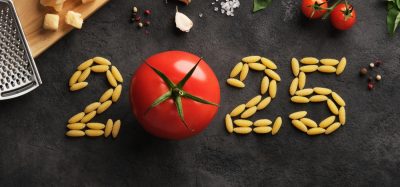Formulating sugar alternatives
- Like
- Digg
- Del
- Tumblr
- VKontakte
- Buffer
- Love This
- Odnoklassniki
- Meneame
- Blogger
- Amazon
- Yahoo Mail
- Gmail
- AOL
- Newsvine
- HackerNews
- Evernote
- MySpace
- Mail.ru
- Viadeo
- Line
- Comments
- Yummly
- SMS
- Viber
- Telegram
- Subscribe
- Skype
- Facebook Messenger
- Kakao
- LiveJournal
- Yammer
- Edgar
- Fintel
- Mix
- Instapaper
- Copy Link
Posted: 22 May 2020 | Saquib Ramday | No comments yet
Saquib Ramday, Category Director at Tate & Lyle, answers New Food’s questions about the global push for sugar reduction, and explains how formulation processes work when opting for sugar alternatives.


Q: Why are we seeing a reduction in sugar?
A: According to the World Health Organization (WHO), around 1.6 million deaths are directly caused by diabetes worldwide.1 As rates of obesity and diabetes continue to rise across the globe, we are seeing the implementation of an increased number of measures, which are aimed towards empowering people to make changes to their diets and reduce their sugar intake.
This trend is being accelerated by government intervention including taxes on products with sugar content above a certain threshold, intervention from lobbying groups and marketing campaigns to encourage people to reduce their sugar intake.
We are seeing these measures impacting consumer behaviour. People are becoming increasingly aware of the amount of sugar in various foods, and the negative long-term impact high sugar consumption can have on their health. More and more consumers are now proactively seeking lower-sugar options.
As flavours with modifying properties, stevia derived flavours can enhance or subdue various other flavour elements present in the formulation by reacting with the ‘sweetness peaks’ of the other molecules present.
As a result of this, we have noted a growing demand for ingredients that reduce sugar in formulations across a broad range of categories, including beverages, dairy, bakery, confectionery and soups, sauces and dressings. We are seeing, for example, parents demand greater sugar reduction in children’s products, which has invited more scrutiny around the sugar content of children’s juice drinks2, while people are also looking for sugar-reduced dairy products they can enjoy without feeling guilty.3
Despite this trend, we also know that while many consumers are attracted to reduced sugar solutions, taste remains the dominant factor impacting buying behaviour4, so it’s important for manufacturers to consider how to create sugar-reduced formulations that consumers will still find delicious.
Q: Why is stevia proving so popular?
A: Consumers are developing a growing awareness of the variety of sugar replacement solutions available to them and have indicated a preference5 for solutions they perceive as cleaner label than many options available on the market. One study has indicated that one third of consumers are now looking to avoid food or drink that contains artificial ingredients6, and this has driven the shift in demand to sweeteners from a plant-source, including stevia products.
We are seeing the global stevia market double in volume every five to six years as a result of this demand.7 Across Europe, the use of stevia derived sweeteners in formulations has been increasing steadily in recent years with a spike in demand in 2017 and 2018.8 It is now the third most commonly used sweetener by food and beverage manufacturers in the European region.9
Q: How does the formulation process work?
A: The formulation process we apply at Tate & Lyle is simple – we get the basics right and we progress step by step.
The first thing we look at is the best way to perfect the sweetness profile of a product by pulling upon our ingredient expertise and utilising our toolbox of sweetening solutions, adapting our approach to a manufacturer’s unique formulation challenges. This can involve reducing sugar in a formulation or removing it altogether.
We also consider the overall sweetness intensity. As part of this, we focus on both the ‘upfront’ sweetness and ‘later onset’ sweetness. Those terms refer to how fast a sweet taste reaches its ‘peak’ – sugar for example has high levels of upfront sweetness while some high intensity sweeteners have a more delayed onset and a lingering, sweet aftertaste. We ensure that any sweeteners used to replace sugar are balanced correctly in order to match as closely as possible the taste of a sugar-sweetened formula.
People are becoming increasingly aware of the amount of sugar in various foods, and the negative long-term impact high sugar consumption can have on their health.
Once that first stage is completed, we switch onto mouthfeel, which refers to the texture of a formulation – for example, the way a sweet fruit juice coats the mouth. When sugar is removed, this can often lead to a diluted, ‘thinner’ texture, so we look at ways that this can be built back up. Here we can draw from other ingredients in our portfolio, such as fibres or starches, which re-create density and bulk if needed.
As a third step, we look at the formulation as a whole and check if we need to re-balance the acids. Then we proceed to the final stage, which we call ‘top-noting’ – this refers to addressing the subtle, more delicate elements of a formulation’s flavour profile, like the fresh fruit flavours in a strawberry or mango flavoured water, to ensure the flavour profile comes together and is well-rounded.
Q: What is a modifying ingredient?
A: Ingredients with modifying properties are those that can change any ingredients that alter the taste profile of a product by interacting with other ingredients. This happens because steviol glycosides have a complex flavour profile – they don’t just taste sweet. In addition, some of the steviol glycosides have an earlier onset of taste, while others have a delayed onset, and we can use these to ‘layer’ with other components.
As flavours with modifying properties, stevia derived flavours can enhance or subdue various other flavour elements present in the formulation by reacting with the ‘sweetness peaks’ of the other molecules present. For example, a fruity water can be tweaked so the taste profile will become more closely aligned to a cooked fruit, as opposed to fresh. The levels of use for different product types are carefully developed through robust sensory testing.
We are seeing the global stevia market double in volume every five to six years as a result of this demand.
As a modifying ingredient, stevia can enhance or subdue various other flavour elements present in the formulation by reacting with the ‘sweetness peaks’ of the other molecules present. For example, a fruity water can be tweaked so the taste profile will become more closely aligned to a cooked fruit, as opposed to fresh.
Q: Why is ‘time intensity’ important?
A: Each component in a flavour matrix will have its own ‘time intensity’ profile and understanding this is crucial when using flavour modifying ingredients as those ingredients work by interacting with this profile to boost or supress certain flavours.
Time intensity is also an important consideration when rebuilding the taste of sugar in a product. In a formulation containing sugar, there will be an instant peak in sweetness, followed by an instant decline and then no aftertaste. This is the benchmark for sweet taste. Some high intensity sweeteners have an earlier onset of sweetness than others, and some of them linger and have different ‘sweetener curves’ – those include sharp peaks for some while others have more of a plateau effect. In order to rebuild this sugar ‘feeling’, we work with different molecules, all with different time intensities as it’s impossible to recreate the taste of sugar with a single molecule.
References
1. WHO Diabetes Fact Sheet
2. Tate & Lyle Proprietary Research, Global Consumer Ingredient Perception Research, February 2020 (UK data)
3. Mintel GNPD data
4. Roper Reports Worldwide
5. Lightspeed/Mintel, Base: 2,000 internet users aged 16+ in each country
6. Lightspeed/Mintel, Base: 2,000 internet users aged 16+ in each country
7. Tate & Lyle internal data
8. Mintel, Global New Products Database (GNPD)
9. Mintel, Global New Products Database (GNPD).
About the author
Saquib is responsible for the Commercial activities of Tate & Lyle in the Beverage, Bakery and Confectionery industries in Europe. After spending the early years of his career in Food & Beverage Mergers & Acquisitions, Saquib joined Tate & Lyle in 2011 and has held various roles across Strategy, M&A, Product Management, Sales and General Management. Saquib holds a BSc in Economics from The Wharton School at the University of Pennsylvania, and an MBA from the University of Chicago Booth School of Business.
Related topics
Health & Nutrition, Ingredients, New product development (NPD), Research & development, Technology & Innovation









